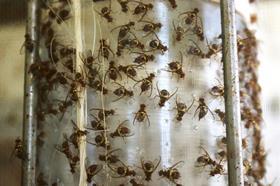
Australian research into sterile insect technology (SIT) will been strengthened through a new A$10m collaborative project.
Managed by Hort Innovation and backed by funding from Western Sydney University (WSU) and the South Australian government, the three-year project will support ongoing research into eradicating Queensland fruit fly (Qfly). The research is being undertaken at Australia’s National SIT Facility at Port Augusta, South Australia, which opened in 2016.
“This new funding will not only support ongoing production but also refinement of our techniques in anticipation of the introduction of a full male-only strain of flies to the facility, which is being developed through a separate Hort Innovation funded project,” said Dan Ryan, coordinator of Hort Innovation’s SITplus programme.
“Our SITplus programme, which is worth more than A$50m, is based on similarly successful international programmes. SIT involves the strategic release of millions of sterile flies to greatly outnumber the wild population, with the intention to limit the opportunity for wild flies to mate and ultimately leading to a collapse in subsequent generations of wild flies.”
Ian Anderson, director of the Hawkesbury Institute for the Environment at Western Sydney University, said the next phase of research will look to further optimise SIT Q-fly production to support national operations.
“This research aims to fill in the identified knowledge gaps in producing high performing and healthy SIT Q-fly which have emerged through the work already undertaken as part of the SITplus programme,” he said.
South Australian minister for primary industries and regional development, Tim Whetstone, said the state was leading the way in the use of SIT to eradicate Q-fly.
“SIT technology has been a key part of our eradication response to fruit fly outbreaks in South Australia, and our government is committed to investing in and protecting our vital A$1.2bn horticulture industry,” Whetstone said.



